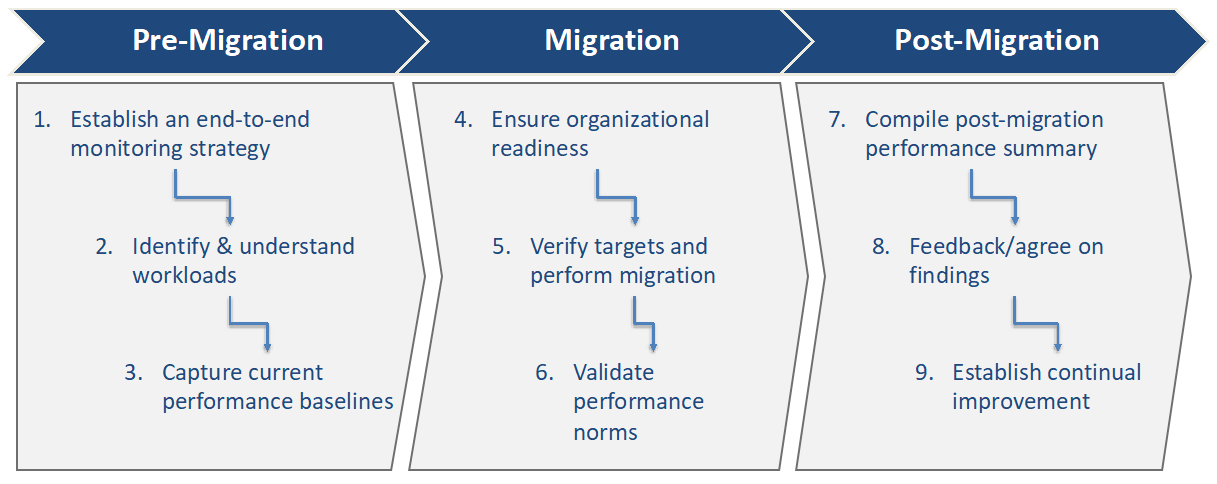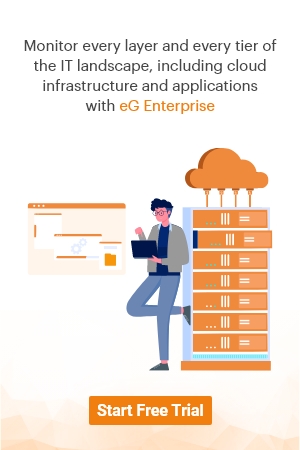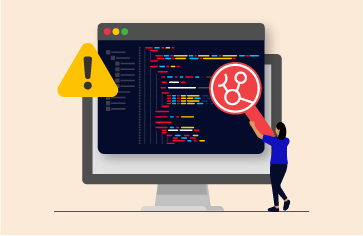Cloud Migration Best Practices – 10 Considerations

This article was originally written in 2018 and has been continuously updated. It was last updated in 2022.
One of the most radical trends in enterprise IT in the recent years is cloud migration. With cloud service providers innovating constantly to address the security and management concerns around cloud adoption, enterprises seem more positive and reassured to migrate their on-premises workloads to the cloud. While the more popular migration approach is the move to the public cloud, private clouds are also rising in adoption and hybrid clouds are also on the rise. Digital transformation is one of the major drivers of cloud adoption across the world.
| Enterprise Forecast: Cloudy with a Chance of Migration |
|---|
|
One can’t expect magic to happen and have all organizations just lift and shift their workloads to the cloud. The move to the cloud is a strategic one and can’t happen overnight. Compared to rolling out new services and/or infrastructure in the cloud, migrating existing workloads to the cloud may be even more challenging. With careful planning, training, backup, benchmarks, and pre-defined expectations of performance and service levels, cloud migration typically happens in phases.
This blog encapsulates 10 best practices that are intended to help IT teams – whether in large enterprises, SMBs, or part of service provider organizations – to achieve performance success in their cloud migration projects and benefit from high levels of service availability, cloud infrastructure performance and user experience.
As we discussed, cloud migration is not a one-time activity. It typically involves various steps staggered across three important phases: pre-migration, migration and post-migration. Continuous monitoring of performance and analysis of capacity needs is critical throughout the cloud migration journey. The following best practices will help map the importance of monitoring to each of these areas and help you achieve performance success in your cloud endeavors.
#1 Understand Your Digital Business Service and Its Performance Implications
- Understand digital business services end-to-end, and outside-in from the external customer’s perspective
- Make sure you know how your monitoring strategy will isolate the cause of performance issues across all tiers, what level of automation is embedded and what it will take to maintain effective correlation
- Understand how you will baseline current and future services at every level—end user experience, business transactions, applications and infrastructure—and what level of automation is included
- Recognize that application ecosystems can vary significantly, and while not all are suitable for migration to the cloud they are still critical for performance in pre- and post-production environments
#2 Identify and Understand Workloads
- Workloads include applications and their supporting ecosystems
- Whether an existing workload is suitable for the cloud is dependent on the application and its supporting ecosystem
- Topology maps can help visualize workloads, and it is helpful to go beyond discovering discrete elements and include dependencies (application-to application, application-to-VM, and VM-to-physical machine)
- Correlating applications and infrastructure performance can significantly help understand workloads
#3 Capture Current Performance Baselines
- Capturing baseline data is critical for assessing the suitability of migrating a workload to the cloud from both a cost-benefit and a performance perspective.
- Diagnosing performance issues in any environment—pre-production and production—can require significant efforts from many different stakeholders.
- Testing often requires a deeper view of how applications work, including the underlying infrastructure components
- Understanding current performance baselines can bring immediate value to the enterprise, even before applications are migrated to the cloud
#4 Ensure Organizational Readiness
- Cloud migrations will involve cultural change
- Match the level of tool-chain integration to your current organizational capabilities
- Managing cross-functional stakeholders is often the ‘heavy lifting’ of cloud migrations
- Service-oriented analytics can improve organizational transparency and trust
- Ensuring organizational readiness should prevent organizations from producing change faster than the organization is ready to absorb and drive improvement priorities to accelerate flow (innovate) and increase operational excellence
#5 Verify Targets and Perform Migration
- Verification and validation testing apply regardless of whether you are using waterfall or iterative development (i.e., agile) approaches
- Development and operations staff must work together to ensure that proposed migration targets are verified and prepared for the migration
- The ability to use a single monitoring platform and be able to easily compare pre- and post-migration baselines can help improve the efficiency of verification and validation activities, regardless of the operating mode in use
#6 Validate Performance Norms
- Validation testing includes testing for both utility (fit for purpose) and warranty (fit for use)
- There may be multiple levels of validation required, since in many cases there may be a mix of on-premises and cloud-based components involved in the application ecosystem
- Verification and validation activities may also include integration testing of operational integrations and procedure walks of post-migration run books, so that all stages of the service lifecycle understand how the new monitoring environment will be used in their specific roles
#7 Compile Post Migration Report
- Just as your pre-migration planning began with establishing a service-oriented monitoring strategy, your post-migration performance summary should start with a top-level view of digital business service performance
- The post-migration performance summary should also include:
- Pre- and post-migration comparisons of target services, segments and components
- Trending reports specific to the target(s)
- A review of the monitoring environment
- Observations, findings and concerns
#8 Gather Feedback and Agree on Findings
- It is important that stakeholders involved in all levels of change be included in communications regarding post-migration performance
- Governance procedures outlined in pre-migration planning should be used to agree on findings and develop recommended action items
- The cloud monitoring solution should facilitate effective collaboration and feedback, including capturing knowledge about performance-related issues and fix history
#9 Establish Continual Improvement
- End-to-end monitoring presents transformation programs with opportunities to improve organizational transparency and trust, but this won’t happen on its own
- Your cycles of monitoring should be aligned with your service lifecycle and your organizational maturity
- Recognize the broad technical and organizational scope of monitoring, and make sure there are organizational development plans in place to exploit monitoring investments
#10 Make Monitoring a Program of Work
- Make sure sponsorship understands the importance of performance monitoring as a critical work stream
- Establish interfaces with related work streams around costing, governance and security
- Leverage a service-oriented monitoring approach to drive cultural change
Organizations should look at performance monitoring not as an afterthought post-migration, but as an integral element of their digital transformation and cloud journey. At every step of the way, monitoring should be incorporated to benchmark KPIs, track user experience, understand performance deviations, understand and forecast capacity needs, and ensure seamless transition and benefit from actionable insight for scaling and cloud expansion. These best practices help ensure that your monitoring program can fully exploit the investments you are making for cloud adoption and realize measurable ROI and cost savings.
eG Enterprise is an Observability solution for Modern IT. Monitor digital workspaces,
web applications, SaaS services, cloud and containers from a single pane of glass.









